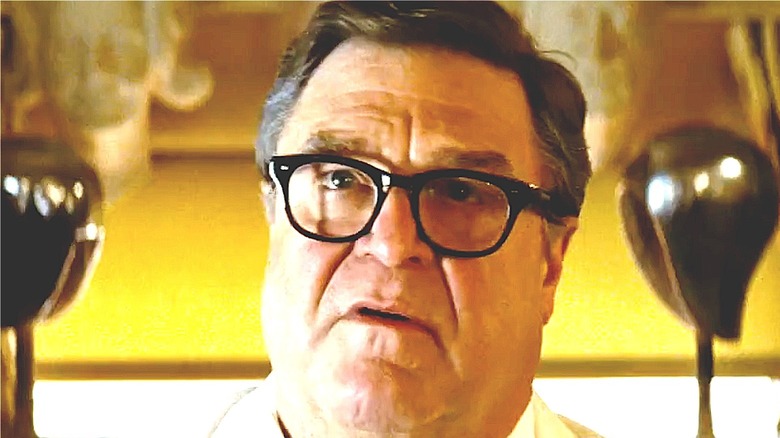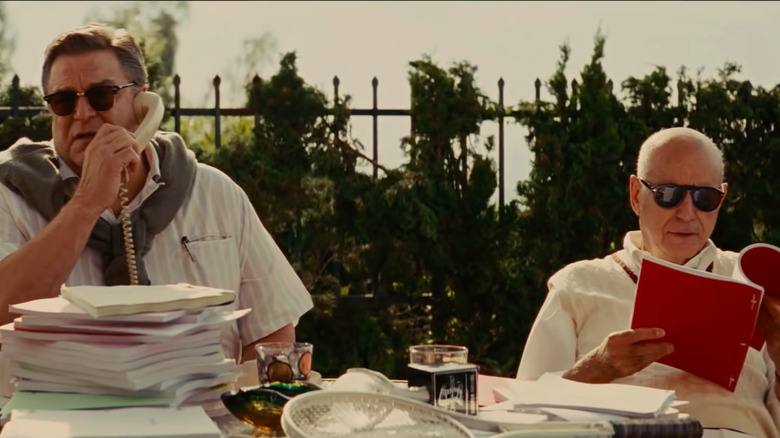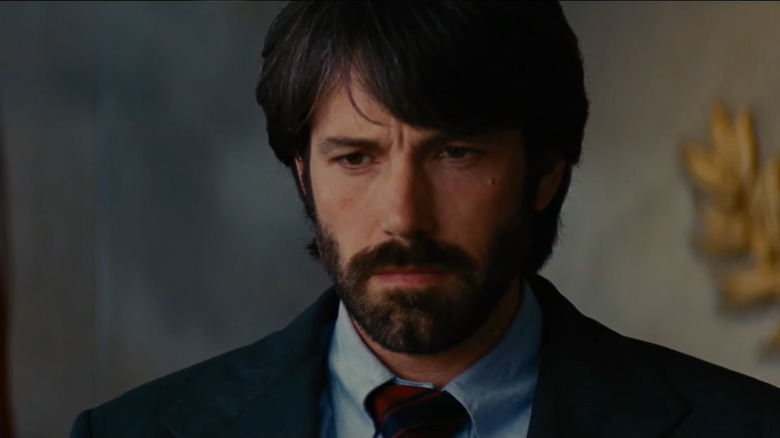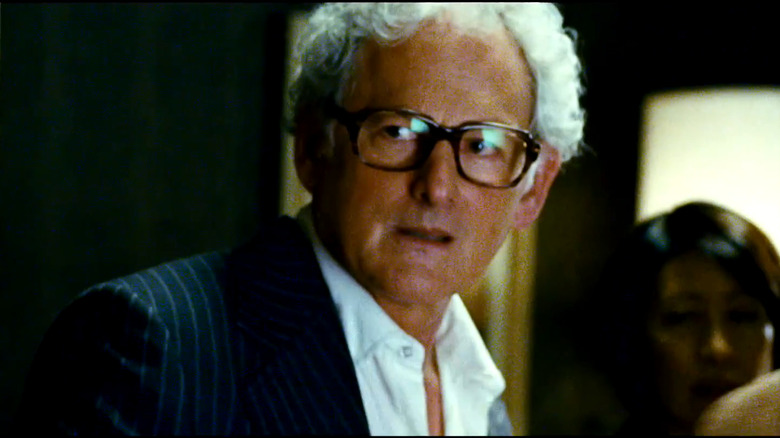How Historically Accurate Is Argo?
The 2012 Ben Affleck-directed movie "Argo" follows the collaborative effort of the CIA and the Canadian government in helping six American diplomats escape the Iranian Hostage Crisis in 1979. Affleck also starred in the movie as Tony Mendez, the CIA agent and exfiltration specialist who embarked on the dangerous mission to Iran to get the Americans back. Received very well by the critics, the movie was nominated for seven Academy Awards and ended up winning three of them (per IMDb). It won the award for the Best Picture, not only at the Oscars but also at the Golden Globes (Best Motion Picture: Drama) and the British Film Academy Awards (Best Film).
The nail-biting thriller captured the conception, planning, and execution of the idea that took place with the involvement of the Canadian ambassador to Iran along with the Canadian government, the CIA, and Hollywood. Based on a Wired article that recounted the effort in its entirety, the movie also took important details from books, like Mendez's memoir, "The Master of Disguise: My Secret Life in the CIA."
Even as the movie recounted a real crisis and a perilous rescue, one has to wonder how much of the movie was true and how much was not. Well, worry not, because we have the answers.
What was historically accurate about the movie?
For starters, "Argo" is centered around real events and people. The movie's basic premise is based on a real mission that the Canadian government and the CIA undertook. In the movie, trying to come up with a farce set up to enter and freely exit Iran, Affleck's Mendez comes up with a fake sci-fi movie idea because of his son.
Mendez contacted his friend John Chambers, an Oscar-winning Hollywood makeup and prosthetics artist to set a plan in motion. Complete with a phony production company, advertisements, and a promotional party, a fake sci-fi movie "Argo" came about. Based on several personalities, Alan Arkin played the role of a Hollywood producer called Lester Seigel, who agreed to participate in the facade. John Goodman played the role of Chambers.
The ruse set up was that Mendez would pose as an Irish film producer, from the fake production company, scouting locations for a sci-fi movie "Argo," in Iran with his crew. The six diplomats were given different roles in Mendez's crew. The Canadian government issued fake identities to the six diplomats and sent them to the Canadian Embassy. With their fake identities as a film crew, the diplomats and Mendez were supposed to simply take a flight out of Iran. And as outrageous as it sounds, that is how it happened in reality.
While the basic plot and premise of the movie seem accurate, though, some details were certainly not.
What Argo got wrong about the rescue?
The movie made the conscious choice to change several details from the story mentioned in the Wired article by Joshuah Bearman.
In the movie, all six diplomats were shown to be hiding in the Canadian diplomat Ken Taylor's home. In reality, the diplomats were divided and hiding in Taylor and another Canadian diplomat's homes. The second Canadian diplomat, John Sheardown, was completely eliminated from the movie.
A major departure from the essential mission, and how it played out, was the climax of the film. The group of diplomats and Mendez face a last-minute crisis when a day before their scheduled departure, the American government revokes the authorization for the group to fly. Mendez still moves ahead, despite the risk involved. Additionally, the tension with the Iranian guards at the airport is intensified in the movie as the guards call the fake movie production office and eventually chase down the plane when they find out the truth: In reality, though, while the diplomats were (obviously) nervous about getting caught, their plan worked out just as perfectly as they had imagined. The group took an early flight out which gave them an added advantage of dealing with an immigration staff working in the wee hours of dawn, when the Iranian military presence was low as well.
These elements were inserted in the movie for the sake of dialing up the climactic tension. Other aspects of the true story were also dramatized (or underplayed) as a part of the creative license of filmmaking.
Argo dramatized and underplayed several details of the rescue
While the pulse-pounding climax of the movie was exaggerated for effect, there were several other details that were carefully manipulated to suit the narrative of the movie, as well. A scene in the movie when the group gets confronted by a hostile crowd in a market in Tehran and has to be safely removed from any public sightings was a movie-introduced sub-plot. It was meant to emphasize the urgency of the rescue and the threat that the diplomats faced staying in Tehran. In reality, the group was hidden in the two homes.
The movie also toned down the amount of Canadian aid given in the entire mission quite a bit. In reality, when the diplomats safely arrived back home, the American government, due to a fear of retaliation, did not declare the CIA involvement in the rescue. The credit, as it was, was given to the Canadian government and their diplomats including Ambassador Taylor. In 1997, the rescue was declassified and the CIA's involvement was revealed. Even so, the Canadian participation from the conception of the rescue plan was integral to the effort.
Upon the film's release, Canadian critics, such as Brian D. Johnson of Maclean's, took note of the fact their country's contribution to the rescue and Taylor's important role in the entire effort was severely downplayed in the movie. Ben Affleck heard this criticism, and made a point to change in the language of a note in the post-script credits, per The Toronto Star, to better reflect reality.



